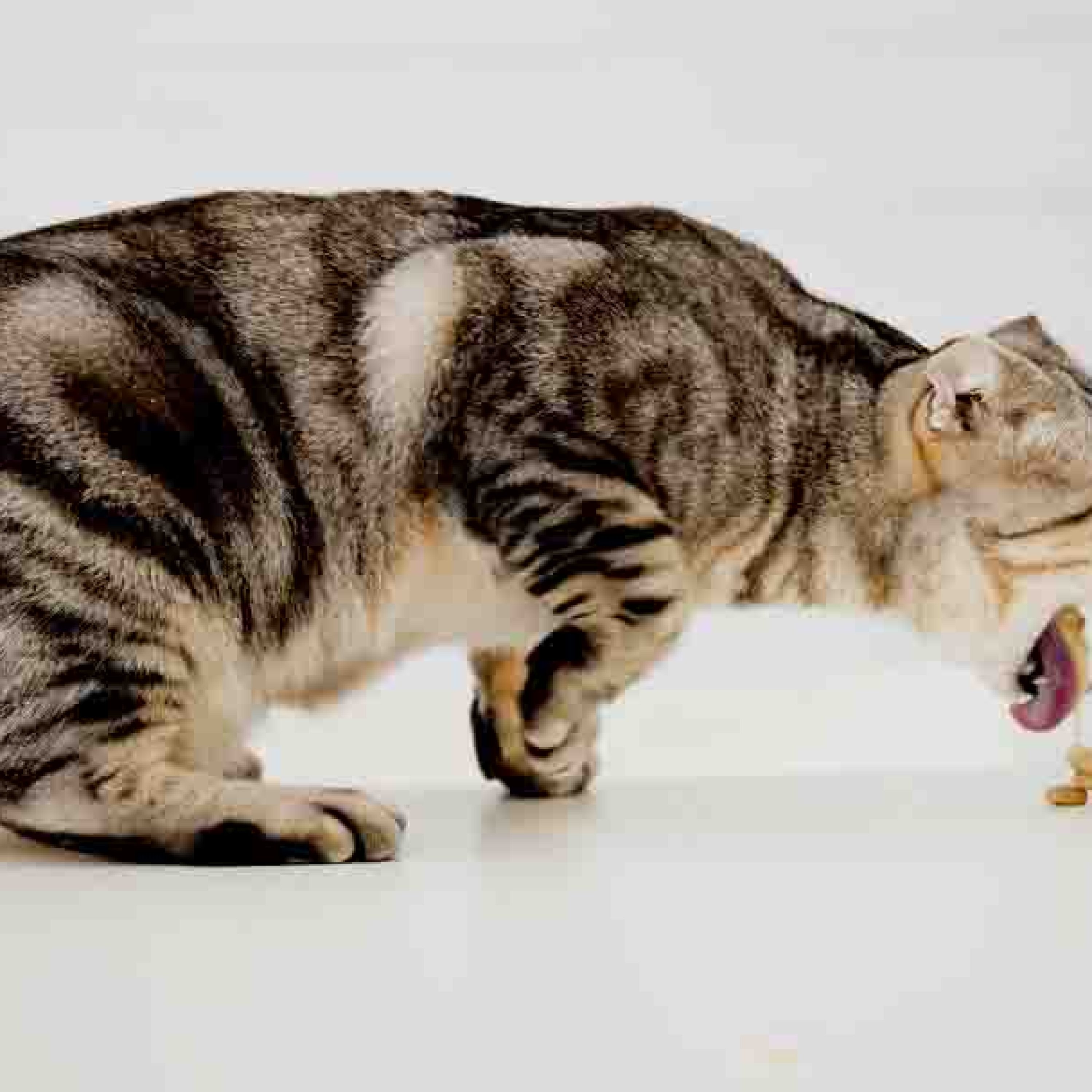Hairballs In Cats - What Are They?
That ball or tubular shaped wad of hair and fluid your cat vomits is a hairball and may be a natural occurrence resulting from your cats’ grooming. If relatively infrequent there is likely no problem. If more frequent (more than several times a year) they may indicate a problem, such as excessive grooming. This is especially so if your cat is a shorthair and is producing hairballs as they are much less likely than longhair cats to produce them.

PHYSICAL CAUSES OF HAIRBALLS IN CATS
Excessive grooming can have psychological or medical causes. If your cat has allergies or a skin problem you should look him over thoroughly for skin abrasions, fleas, or obvious irritations to the skin. If it’s fleas the solution is simple but you might want to ask your vet for the flea treatment she recommends.
Allergies can be to anything, just like us. Symptoms of allergies can be:
- Itchy, running eyes or nose (you’ll see him rubbing those areas.)
- Sneezing, coughing or impeded breathing
- Noticeable irritations, hives or other skin anomalies
- Ear infections. (Watch for him rubbing his ears
- Vomiting or diarrhea.
- Snoring (poor air intake)
- Excessive licking (grooming)
His excessive grooming is an attempt to relieve the irritation or distress the physical symptoms are causing him.
How To Prevent Hairballs – Physical
If your cat doesn’t seem to have a problem but is prone to hairballs and seems to generate them as a natural consequence of grooming – but you’d like to reduce or eliminate them, there are several areas you can apply your attention.
Improve skin and coat care:
- Brush him regularly and often. Let him tell you if you’re using the right pressure. (He’ll be obviously pleased if you are, he’ll leave if you’re not.) Notice while brushing him if any area is particularly sensitive and if there are any areas that are more bare than surrounding areas. such places could indicate an issue that needs to be addressed.
- Use flea prevention regularly if appropriate. (If he doesn’t have them, don’t use it.)
- Insure healthy skin and fur with proper hydration. It has been proven and is universally accepted that a fountain designed for cats will increase your cats’ water intake significantly, thus improving his skin and coat health. Just be sure it is a quality cat fountain and not a cheaply made, actually harmful, cat fountain. You’ll find the best at www.thirstycatfountains.com.
- Hairball diets have increased fiber that might help motility. They should not be used instead of looking for an underlying cause of hairballs! Discuss special diets with your veterinarian.
- Hairball remedies help lubricate the intestinal tract and may ease the passage of hair. They again should not be used instead of looking for an underlying cause of hairballs.
If your cat is grooming excessively and generating hairballs and the cause is not physical then there may be a something in your cat’s life that is causing him stress. Is there a new cat in the area or household? Has something changed within the immediate household? Has someone left or someone come? A distressed cat will show his distress in a variety of ways – (that bad behavior you so dislike is usually caused by environmental/interpersonal stress – the cats’ got a problem that he can’t fix by himself.)
How To Prevent Hairballs – psychological
- Identify possible sources of anxiety such as changes in the environment such as a new cat or person in the household, lack of ability to have privacy, having to share bowls, litter boxes, etc.) Intentionally introduce your cat to these changes when possible. Also check for another illness your cat may have that is stressing him.
- Does he have enough opportunity to indulge his ‘catness’? Are there areas for him to climb or scratch or jump or a cardboard box for him to climb into? (All cats need some of that.)
- Is he getting enough, or too much attention. Are there over indulgent children in the environment?
- Is another animal prowling the environment outside – still your cat’s domain and he may well know it is happening while you don’t.
So often cats behave in ways we don’t want because that is their way of showing us that there is a problem. We should take these indications seriously – as seriously as your cat does – so that we can fix the problem and have a settled, happy cat.
Do Hairballs Need To Be A Problem?
Normally, cats groom, ingest some quantity of fur and it passes through them without issue. Or they cough up the odd hairball every once in a long while. However there are indications to be aware of. If too much hair has been ingested and fails to pass either in his feces or as a hairball their may be a blockage in your cat’s upper intestinal tract. In this case you might see him vomiting or attempting to, showing abdominal pain and having little or now appetite. In these instances the problem is more serious and a trip to the vet is advised.
